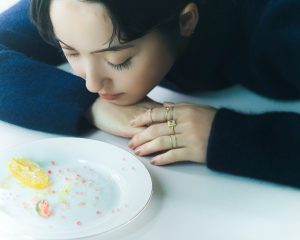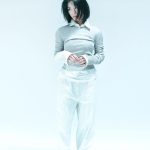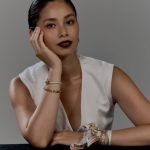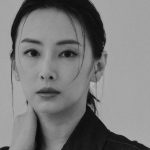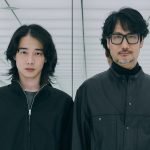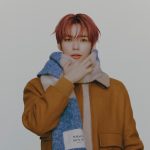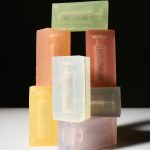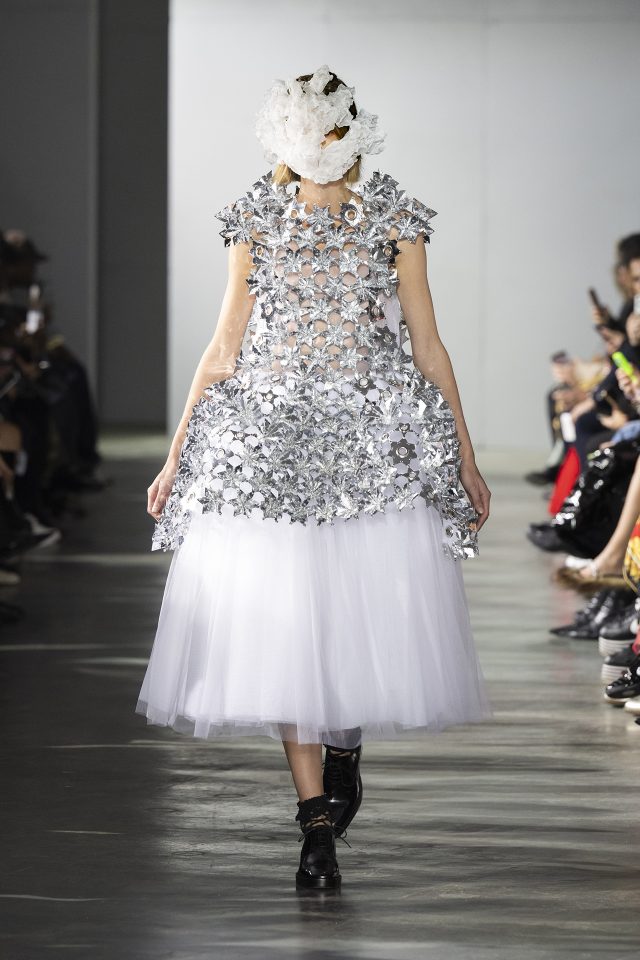世紀のアートディレクター Fabien Baron (ファビアン・バロン) インタビュー
Fabien Baron
by Manaha Hosoda
Bottega Veneta (ボッテガ・ヴェネタ) の2018年春夏キャンペーン「アート・オブ・コラボレーション」で広告キャンペーンの新たな金字塔を打ち立てた最も影響力を持つアートディレクター Fabien Baron (ファビアン・バロン) にインタビューを敢行。エポックメイキングとも言うべき今回のキャンペーンプロジェクトから彼のクリエイティビティに迫ってみた。
世紀のアートディレクター Fabien Baron (ファビアン・バロン) インタビュー
Design
*You’ll find the English text after the Japanese.

Photograph by Mert Alas & Marcus Piggott
「アートディレクターとは一体どんな職業なのか。」この率直でありながら、非常に難しい質問に対する答えは勿論、千差万別あるだろう。しかし、Fabien Baron (ファビアン・バロン) という存在が最も明瞭な答えのひとつになるかもしれない。
ファッションの世界において最も影響力を持ち、最も輝かしい功績を誇るアートディレクター、それが Fabien Baron だ。30年以上にわたるキャリアにおいて、Alexander Liberman (アレキサンダー・リーバーマン) をはじめ、Liz Tilberis (リズ・ティルベリス) や Franca Sozzani (フランカ・ソッツァーニ) といった業界でも有数のレジェンド達と共に仕事を手がけ、後世にも残る数々の素晴らしいヴィジュアルを生み出してきた仕掛け人。ファッション誌から広告キャンペーン、フレグランスやコスメティック、はたまた家具やアイウェアのデザインなど、その活躍は多岐にわたる。そこに必ず共通するのが、研ぎ澄まされた感覚と先見の明、確固たるヴィジョンだ。
2018年2月、Fabien Baron 率いるクリエイティブエージェンシー Baron&Baron (バロン&バロン) が新たに世に送り出したのが Bottega Veneta (ボッテガ・ヴェネタ) の2018年春夏キャンペーン「アート・オブ・コラボレーション」。これまでクリエイティブ・ディレクターの Tomas Maier (トーマス・マイヤー) は数々のすぐれたクリエイターとコラボレーションを展開してきたが、このキャンペーンは今までに類を見ないほど画期的なヴィジョンを打ち出した。
それは、動画で始まり動画で完結させるというデジタル全盛期の現代における広告キャンペーンの新たな金字塔だ。これまであくまでもキャンペーンフィルムは紙面のためのヴィジュアルの補完としての役割を果たしてきたが、ここではそうした常識が見事に逆転され、ヴィジュアルは動画のキャプチャー画像が用いられているのだ。
アカデミー賞受賞経験を持つ撮影監督 Philippe Le Sourd (フィリップ・ル・スール)、業界屈指の舞台装置デザイナー Stefan Beckman (ステファン・ベックマン)、 『ロスト・リバー』や『ツイン・ピークス』のサウンドトラックを手がけた音楽プロデューサー Johnny Jewel (ジョニー・ジュエル) といった錚々たるクリエイター陣を迎えて、制作されたのは全6作品で構成されるアンソロジーシリーズ『リフレクションズ』。2月から4月にかけて2作品ずつ公開され、その長編映画にも匹敵するダイナミックな世界観は大きな注目を集めてきた。遂に最後の2作品が公開されたばかりのこのプロジェクトを記念して、TFPは念願叶い Fabien Baron をインタビューすることに成功。エポックメイキングとも言うべき今回のキャンペーンプロジェクトを通して彼のクリエイティビティに迫ってみた。

『リフレクションズ』ビハインド ザ シーン
—『リフレクションズ』という題名は、どのように思いついたのでしょう?
「内省」や「反射」を意味するこの言葉を、一旦立ち止まる、という視点で考えています。物事を違う視点で考えること。今回の映像作品を見てもらえば、物事にはさまざまな側面がある、と感じることでしょう。反射によって見え方が異なるもの、異なる面。自分が持っているものを一歩下がって見つめられる、そしてそこから先に進むことができる、ということです。
—ボッテガ・ヴェネタの新しいキャンペーンの核となる部分に動画を使おうと決めた経緯をお聞かせください。
まず、ボッテガ・ヴェネタのようなブランドはストーリー性をより強く出すことが重要だと感じていました。次に、動画は最近特に成長が著しく、静止画にはあまり興味を示さない新しい世代のことを考えた時、映像はブランドメッセージを伝える最善の方法だと思いました。従来型のキャンペーンに代わって映像を使うこと、紙媒体に使うもの、映像、デジタルコンテンツもすべて動画をベースにすることにしました。ですので、紙媒体のキャンペーンに使うビジュアルは映像作品から切り取っており、フォトグラファーの手は借りていません。
—ファッションの広告キャンペーンでフォトグラファーを使わないとはかなり型破りな戦略ですね。
私がフォトグラファーを入れずに大規模なキャンペーンを手掛けたのは、今回が初めてです。ただし、映像作品なので撮影監督はいました。そのほかのチームメンバーは、ヘアメイクと、スタイリスト。でも、いわゆる静止画のフォトグラファーはいなかったわけです。多くの会社が欲しがるようなクリエイティブの後ろ盾、つまり、キャンペーンが誰によって撮影されたのか、という一言は、今回はありません。私が現場監督を務めることになりましたが、それはただ撮影監督と一緒にやる仕事が、通常、フォトグラファーと一緒にやる仕事とよく似ていたからに過ぎません。究極的には、ブランドのメッセージとマイヤー氏の作品を守ることが私の仕事と言えるでしょう。
—映像作品の監督を務めつつ、協力してくれるチームメンバーも慎重に選びましたね。その選考過程について教えてください。
撮影監督にはフィリップ・ル・スールを起用しました。ル・スールはウォン・カーウァイの『グランド・マスター』、ソフィア・コッポラの『The Beguiled/ビガイルド 欲望のめざめ』に携わっています。彼の照明の扱い方はとても映画的で『リフレクションズ』にぴったりだった上、スタイルやファッションに関しても造詣が深い人物です。ル・スールとはこれまでにも何度も一緒に仕事をしていたので、自然に調和しました。色や、生地の揺れ方もよくわかっていました。こういったことすべてが、違いを生み出すのです。舞台美術デザイナーのステファン・ベックマンは、センスのレベルがすばらしく高い上、このブランドについて私たちが言わんとすることを完全に理解していました。モデルたちも表現者として、思いを深く巡らせてくれました。マイヤー氏も私も、ヴィットリア・チェレッティがお気に入りなのですが、それは彼女がイタリア人だからというだけでなく、ラグジュアリーを体現しているからです。

『リフレクションズ』ビハインド ザ シーン
—今回のクリエイティブディレクションのプロセスを具体的についても教えてください。
今回のプロジェクトにおいて、まずはボッテガ・ヴェネタのDNAの最も大切なポイントを定義しなくてはいけませんでした。そして、その定義に合わせて、物語を作り上げていきました。映像を第一としたアプローチを取りたいと最初から決めていたので、キャンペーンのコンセプトを紙媒体と他の媒体で作るにあたって、映画のようなフィーリングを収めるのが重要でした。紙媒体用のビジュアル中で重なるようにレイアウトされたイメージや広告用のイメージヴィジュアルは、フィルムストリップを思い出させます。同じイメージをたくさんの視点から見る事が出来るのです。この特徴によってボッテガ・ヴェネタのキャンペーンはすぐに見分けがつき、ユニークであり、どんな媒体で目にしたとしても一体感が出てくるのです。

『リフレクションズ』ビハインド ザ シーン
—動画とプリントとの大きな違いは何でしたか?また、一番こだわった部分についても教えてください。
映像とプリントは遠い従兄弟のような関係ですが、各媒体がもたらす精神的な体験が異なるため、その二つの媒体から受け取るストーリーも異なると思います。ストーリーのある重要な瞬間を写真で収めることは非常に難しく、完璧な嵐を作るような作業になります。その瞬間を収めることに成功した場合、見ている側はその作品から自分なりのストーリーを作る事が出来るでしょう。写真というのは、事前と事後を暗示させる瞬間を捉えていますが、そのストーリーは見る人各自の想像で作り上げてもらうものです。写真というのは明確でありながら、その解釈というものは永遠なのです。
映像においては、物語が作品のバックボーンにあり、その構造が重要です。見る者は明確な視点を通して、物語を体験することが出来ます。ある意味、こちらの方が直接的にメッセージを伝える事が出来ます。写真と比べた場合、動画は映像内で起きる出来事をそれほど自由に解釈する事は出来ません。観客のための物語がもう決まっているので、映像を観るということはどちらかというと感覚的な体験であり、より見る人を作品世界へ惹きつけることが出来るのです。
ボッテガ・ヴェネタに関して、私達が最も大切にしたことは、力強い物語を通してボッテガ・ヴェネタとお客様を表す5つの柱を表現する事でした。それは、センシュアリティ、ミステリー、シュールレアリスム、デザインです。
—以前、ラグジュアリーブランドはデジタルコンテンツを常に改善していく必要があると語っていました。シーズンを通じてワクワクするような新しいコンテンツを提供していく、という今回のキャンペーンのフォーマットも、それを考慮した結果ですか?
もちろんです。デジタルは瞬発力がより高く、またより迅速に対応できますが、同時にブランドの存在や、高品質のラグジュアリーという信念を表現し続けなければなりません。一定の水準を満たすストーリーがあって、一定水準のビジュアルが用意されている。これが紙媒体を使ったやり方でした。そこにデジタルが来て、何でもありになったのです。それまでは表に出ることがなった部分すらも、何でも見せることができる。それもいいのですが、やはり夢を紡ぐ要素は必要です。『リフレクションズ』の映像作品は、その仕上がりや才能、特殊効果といった点において、長編映画に匹敵するレベルだと思います。ただしそれは重層的なものであり、見る人はいろいろな形で味わえるようになっているのです。
—動画をベースにしたデジタル志向のキャンペーンの未来は、どのようなものになるでしょう?
私たちは制約を押しやろうとしています。他のブランドでも同じことをしているところはあります。とはいえ、このような取り組みは始まったばかりです。4~5年たてば、デジタルを使って更にすごいことができるようになるでしょう。近い将来、人々は本当にクリエイティブなことをするようになると確信しています。今の動画ブームを見ていると、MTVが始まった頃を思い出します。初期のミュージックビデオを見たとき「かっこいいな。女の子が5人写ってる。すごいな、ダンスもしてる」なんて思ったものです。それがどんどん進化していき、驚くほど多くのミュージックビデオが作られるようになった結果、その時代を記録する画像として位置付けられるようになりました。同じことが、これからのファッションと映像、あるいはブランドにも起きると感じており、このような仕事に関わる人はシーズンごとに一味違ったより良いものを生み出していくだろうと思っています。
—デジタルにおけるテクノロジーの進化は最早避けようがありません。私たちはどんな課題と向き合う必要があるのでしょうか?
常に変わり続けるテクノロジーとデジタル世界に適応し続けるのは難しいことです。しかし、クリエイティブな面からすると、常に刺激を受け、緊張感を保つ事が出来ます。何かに適応せざるを得ない場合は、自ずと新しい方法と新しい解決法を生み出すことが求められます。それはテクノロジー側にとっても同じことで、私たちはFacebookやInstagramといった会社に新しいストーリーテリングを可能にさせるテクノロジーを求めてきました。違う言い方をすれば、ブランドを体験できる新しい方法を作って欲しかったのです。時には伝えたいメッセージが媒体に合わせて,形を変えます。逆に媒体が伝えたいメッセージに合わせて形を変えもします。両方のシナリオにおいて、新たなクリエイティビティを生む機会があるのです。

『リフレクションズ』ビハインド ザ シーン
—日常ではどんなところからインスピーレションを得ていますか?
身の回りのあらゆるものから刺激を受けています。自然や空のようにシンプルなもの、木が風によって揺れたり、周りの音に耳を澄ます事ことだったり、どんなものでも。日頃の平凡なディテールが素晴らしい美やクリエイティブなマインドのインスピレーションの源となることが出来るのです。身の回りの細かいことにまで注意を払っていれば、全ての物事が刺激的であるという事に気づけるのです。これは、新しい方法で赴くままに心を解放する、想像力を存分に羽ばたかせるというスキルです。
—ずばり、優れたアートディレクターとは?
優れたアートディレクターは、いつも作り手であるべきです。全てに関して意見をしっかりと思っている人、つまりどの媒体でも明確な視点を表現出来る人であるべきです。最終的にアート・ディレクターというのは、問題を解決する人であり、どんな媒体であろうと統一したヴィジョンを表現することに自分の知見を用いることの出来る人です。それには、専門知識とオープンなマインドが必要です。知識が多いと、より多くを学ぶことが出来ます。そして、たくさんの事を学ぶ事で問題解決がより上手くなります。もちろん、センスが良いということは絶対不可欠です。
<プロフィール>
Fabian Baron (ファビアン・バロン)
Baron & Baron 創設者兼CCO
世界で最も尊敬されるクリエイティブマインドのひとり。世界でも有数のラグジュアリーブランドや人気ファッションブランドの数々で革新的な思考とアイコニックなクリエイティブを打ち出し、30年以上にわたって業界を牽引してきた。パリ出身のニューヨーカーであり、常に進化し、時代を先取る仕事においてフランスとアメリカの感性をブレンドした独自のスタイルを発揮し続けている。
-How did you come to the name Reflections?
I think of reflecting in terms of pausing. Thinking about things differently. And if you look at the films, you feel there’s different sides to things. Different reflections. Different aspects. It’s about being able to take one step back to look at what you have. And to move forward from there.
-How did you come to the decision to make moving images the core of Bottega Veneta’s new campaign?
First, we felt that it was important for a brand like Bottega Veneta to be more narrative. Second, the moving image has grown more significant lately, and with the new generation not caring much about still images, film was the best way to communicate the brand message. So everything came from the film instead of the traditional campaign, with a print element, a film element and digital element. We took the stills for the print campaign from the film. There was no photographer.
-That’s quite an unconventional move: a fashion ad campaign without a photographer.
This is the first time I’ve worked on big campaign without a photographer. But we had a director of photography instead since it was film. And the rest of the team: hair and makeup, a stylist. But no photographer. We didn’t have that brand asset that most companies want—to be able to say my campaign was shot by such-and-such. I ended up being the director on set, but only because I compare the work I do with the director of photography very similar to the work I usually do with a photographer anyway— ultimately protecting the brand message and Tomas’s work.

Behind-the-scene from “Reflections”
-You directed the films and you also carefully selected the team of collaborators. Can you talk about that process?
I chose Philippe Le Sourd as the director of photography. He worked on Wong Kar-Wai’s “The Grandmaster” and Sofia Coppola’s film “The Beguiled.” His lighting is very cinematic, which suited Reflections but he also understands style and fashion. I have worked with him many times before and it felt like a natural fit. He understands color and the flow of fabrics well. All of these things make a difference. The set designer Stefan Beckman has an amazing taste level, and he got into what we were trying to say for the brand. The models were also considered collaborators. Tomas and I both loved Vittoria Ceretti. We liked that she’s Italian but also when you look at her, she embodies luxury.
-How do you compose the draft of creative direction? How did you cooperate with the team on the making-of process for the campaign?
For Bottega Veneta, we had to peel the fruit all the way to its core, and define what were the most important points in Bottega Veneta’s DNA. We then built narratives around that core.
And we were very clear we wanted to take a “film first” approach. So when it came to executing the campaign concepts across print and all the other touchpoints, it was essential that we capture that cinematic feeling. The stacked images on the print or outdoor campaign for example, recall film strips, and allow multiple view of the same image—making the Bottega Veneta advertising campaign consistent across all touchpoints but also instantly recognizable and unique.

Behind-the-scene from “Reflections”
-What’s the biggest difference between movie and print, both of which are forms of communication media, to you? What was the point you cared the most when you directed these movies?
Even though they are distant cousins, I think the story revealed in each of the two mediums is different—as is the way you experience it, mentally. Isolating a crucial narrative moment with photography is extremely challenging. It’s like brewing the perfect storm. When a picture is successful, you’ve actually invited the viewer to create their own story from that frozen moment. There is an implication of a before and after—but those events are entirely up to one’s imagination. The image is definite, but the interpretation of it is infinite.
With film, the narrative is the backbone. The structure is essential. As a viewer you are guided through the journey by a very precise point of view—so in a sense, it is a more direct way to pass along a message. There is less space left for the viewer to have their own perception of the events. And with the story established for them, it can become more of a sensorial experience, and in many ways more engaging.
In regards to Bottega Veneta, what was most important to us was how we would express, through a strong narrative, the five brand pillars that represents the Bottega Veneta customer today: Sophistication, Sensuality, Mystery, Surrealism and Design with an inherent Italian touch.
-You’ve spoken before about the need for luxury brands to keep their digital content elevated. Was that a consideration in the format of this campaign, which provides exciting new content throughout the season?
Oh definitely. Digital is supposed to be quicker and faster but you still need to represent the brand and what it stands for: high-quality luxury. You have your story at a certain level, and you have your visuals at a certain level. That’s the way it was with print. Then digital came in and everything was permitted. Now we can show the backdoor of everything. That’s okay but you still need the dream factor. I think the films of Reflections are at the level of a feature movie—in product, talent and special effects—but there are layers. You can consume it in different ways.

Behind-the-scene from “Reflections”
-What does the future look like for digital-minded campaigns based on moving images?
We’re pushing the bar. A few other brands are pushing the bar. But it’s just the beginning. In four or five years, people are going to do amazing things digitally. I’m sure we’re going to see people doing really creative stuff in the near future. This moving image moment reminds me of when MTV started. When you had the first videos it was like, “Oh this is cool. Oh my god there’s five girls on camera. Oh my god, they’re dancing.” And then on and on. Then music videos became incredibly produced and visual commentaries of the time. I think this will happen with fashion and film; brands and I think everyone involved will take it up a notch every season.
-Evolution of digital technology is inevitable. What do you think is the challenge to us?
Constantly adapting to the ever changing technology and digital landscape can be difficult—but these types of challenges that keep you on your toes creatively as well. When you have to adapt, it forces you to think in new way, come up with new solutions. And that works both ways. We have often gone to companies like Facebook or Instagram, asking them to consider new technologies which will allow different modes of storytelling; new ways for people to experience our brands. Sometimes the message adapts to the medium—sometimes the medium adapts to the message. Both are an opportunity for creativity.

Behind-the-scene from “Reflections”
-What inspires you in your daily life?
I find inspiration in everything around me—it could be anything. Nature, or something as simple as the sky, or the way the wind blows into the trees… even simply listening to the sounds around you. The mundane details of your daily life can be the source for incredible beauty, to the creative mind. If you learn to pay attention to your surroundings—and I mean really pay attention—you come to realize that everything can become inspirational. Everything. It’s a skill, teaching your eyes to observe in a new way, learning to let go in your mind, and allow your imagination to flourish.
-What do you think makes a great art director?
A great art director should be a maker. Someone that has an opinion on everything—a precise point of view that can be applied to different mediums with the same clarity. Because ultimately the art director is a problem-solver, and should be able to use his or her knowledge to adapt the vision to any medium. That takes expertise, and an open mind—the more you know, the more you learn. And the more you learn, the better you’re able to resolve problems. Of course, let’s not forget that good taste is essential too.
<Profile>
FABIEN BARON
Founder and Chief Creative Officer Baron & Baron
One of the world’s most sought-after creative minds. For over three decades, Fabien Baron has been driving the industry forward with fresh thinking and iconic creative for some of the world’s most celebrated fashion and luxury brands.As a Parisian-born New Yorker, his unique blend of French and American sensibilities can be seen in work that is consistently elevated and ahead of the curve.
HP:Baron & Baron baron-baron.com
Bottega Veneta www.bottegaveneta.com
